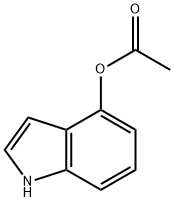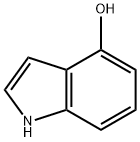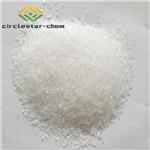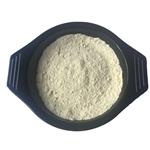Description
4-acetoxylindole is also known as 4-Indolyl acetate. It can be used as standards of the reverse phase HPLC during separation of small molecules. It can also be used as reactant during the preparation of inhibitors of HIV-attachment, prostanoid EP3 antagonist, indolyl-nitroalkanes and psilocybin.
Uses
Reactant for preparation of:• ;Inhibitors of HIV-1 attachment1• ;Prostanoid EP3 receptor antagonist, as a novel antiplatelet agent2• ;Indolyl-nitroalkanes via N-bromosuccinimide catalyzed synthesis3• ;Psilocybin as a medicinal agent4
Uses
4-Acetoxyindole is a useful intermediate for organic synthesis of Psilocine and Psilocine analogs.
Uses
Reactant for preparation of:
- Inhibitors of HIV-1 attachment
- Prostanoid EP3 receptor antagonist, as a novel antiplatelet agent
- Indolyl-nitroalkanes via N-bromosuccinimide catalyzed synthesis
- Psilocybin as a medicinal agent
General Description
4-Acetoxyindole is a chromophore that belongs to the pyrrole family of compounds. It has been shown to react with an ionic liquid under acidic conditions to form a protonated intermediate, which can be deprotonated by a nucleophile. This reaction yields an acetate anion and a fluorescing product. 4-Acetoxyindole also reacts with deuterium gas, yielding an acetate, a deuterium atom, and fluorescing product. The reaction is reversible and the yield of the product depends on the concentration of the reactants. 4-Acetoxyindole has strong carbonyl groups that make it reactive towards other functional groups. These reactions are useful for synthesizing heterocycles such as indoles and isoquinolines.
References
http://www.sigmaaldrich.com/catalog/product/aldrich/259047?lang=en®ion=US
https://pubchem.ncbi.nlm.nih.gov/compound/4-Acetoxyindole






